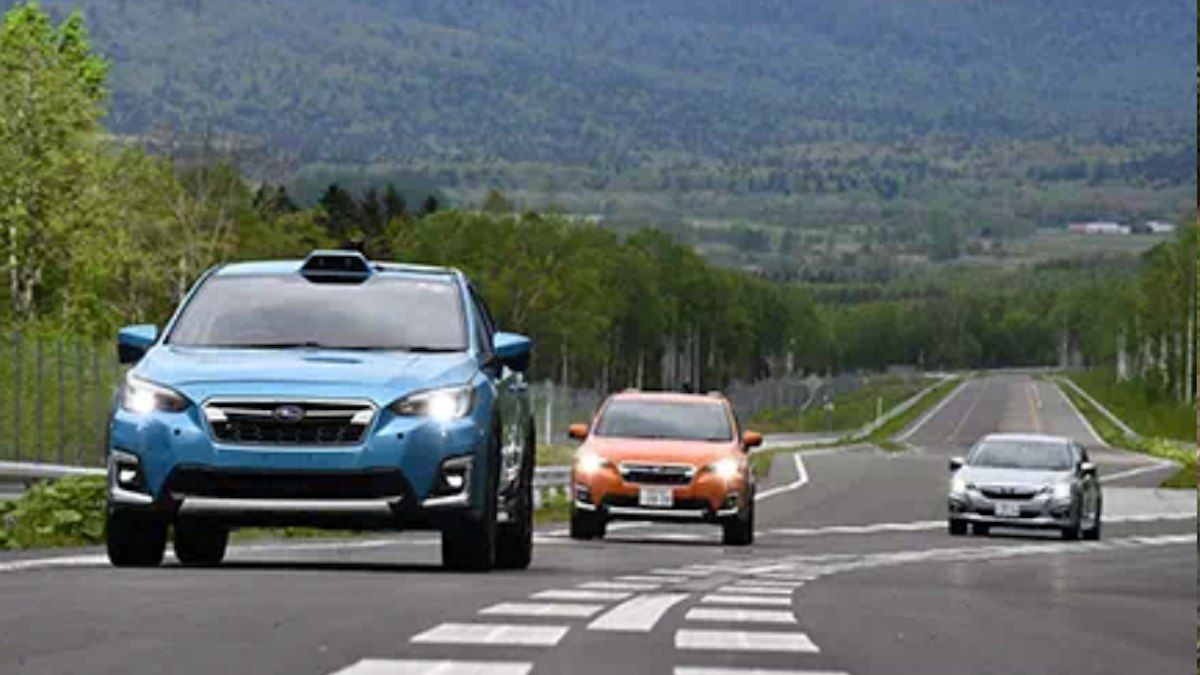Are you ready for this?
Subaru Corporation is testing a new Crosstrek subcompact SUV with new self-driving technology. How close is Subaru to having self-driving tech in its cars? They are closer than anyone thinks. I’ll explain what new technology it’s testing now and what it means for customers.
Subaru Corporation announced that it had installed a local 5G Network at its Japanese test course and had begun testing cooperative driving automation.
Subaru has also installed a local sub-6 5G standalone network, which covers the entire circuit at its Bifuka Proving Ground in the Subaru R&E Center (Hokkaido, Japan).
A significant step forward.
This network is a significant step in their trials of cooperative driving automation, as it provides a high-speed, highly reliable connectivity environment for testing coordination control, including merging and other maneuvers by multiple automated vehicles and remote vehicle control.
Subaru says, “The 5G infrastructure uses spectrum below 6 GHz, offering greater coverage than mmWave with a single base station. High directivity and wide bandwidth enable high-speed, high-capacity data transmission.”
“5G networks that can be set up and operated independently using only 5G, without requiring Mobile Network Operator (MNO) communication equipment or 4G for control signals.”
It’s the first time for a Japanese automaker.
Subaru's initiative marks a significant milestone in the automotive industry, as it is the first time a Japanese carmaker has set up a local 5G network at a test course. This pioneering step is a testament to Subaru's commitment to pushing the boundaries of automotive technology.
Subaru oversees advanced research, and the Subaru R&E Center has previously worked on automated driving systems using mobile communications. This time, harnessing the high-speed, highly reliable connectivity environment provided by the local 5G SA network, the center has begun testing coordination control, including merging and other maneuvers by multiple automated vehicles and remote vehicle control.
The server plays a crucial role in the self-driving system. It calculates routes and other trip plans, which are then provided to direct the vehicles. It also calculates the data necessary for trip planning and vehicle control, directing the vehicle’s driving controls.
Seven sub-6 wireless base stations have been installed around Subaru’s circuit course, enabling remote control for cooperative driving automation throughout the area.
The equipment consists of the Nokia Digital Automation Cloud (NDAC) system from Nokia Solutions and Networks Japan G.K., with installation made possible by support from NS Solutions Corp.
Subaru says, “We will continue its research and development efforts to reduce accidents further and deliver “enjoyment and peace of mind” in the future mobility society.”
Earlier in my report here, I reported that Subaru recently finished another round of testing in a new Subaru Crosstrek equipped with LiDAR technology from InnovizOne.
Incorporating InnovizOne LiDAR in the Subaru Crosstrek automated test vehicle is a significant step towards enhancing safety and confidence in higher levels of automated driving. With its eight cameras, this system provides additional sensor redundancy, ensuring a safer driving experience.
Subaru says there will be zero fatal accidents by 2030.
Can Subaru have zero fatal accidents with its next-generation vehicles? Yes, says Subaru Corporation. They say they will accomplish the goal by 2030. Here’s how they will do it.
Subaru Corporation's new collaboration with AMD, a Santa Clara, California, company, is a testament to the power of partnership in driving technological innovation. This collaboration aims to design circuits for a system-on-chip (SoC) that integrates stereo camera recognition processing with AI inference, paving the way for optimal decisions in self-driving technology.
Subaru says, “We have partnered with AMD to design circuits for an optimized SoC based on the recently launched AMD Versal AI Edge Series Gen 2 adaptive SoC to achieve cutting-edge AI inference performance and ultra-low latency processing at a low cost.”
The next-generation Outback could be the first to get it.
The next-generation 2026 Outback midsize SUV may be the first Subaru model to get the new technology. The all-new, remodeled 2026 Outback midsize SUV should make its U.S. launch in late 2025. That’s just in time to get the new EyeSight X.
Subaru says, “We are committed to developing vehicles based on its comprehensive “all-around” safety philosophy, which includes “preventive safety,” exemplified by its EyeSight driver assist technology, as well as “primary safety,” “active safety,” “passive safety,” and “connected safety.” Subaru will continue to enhance safety in each of these areas to achieve its goal of “zero fatal road accidents in 2030.”
New Subaru self-driving technology is coming. Are you ready for a Subaru Outback that is more hands-off to achieve zero fatal accidents? Click on the Add New Comment red link below and let us know.
I am Denis Flierl, a Senior Torque News Writer since 2012. I’ve invested over 13 years in the automotive industry in a consulting role, working with every major car brand. I am an experienced Rocky Mountain Automotive Press member. You'll find my expert Subaru analysis here. Follow me on my X SubaruReport, All Subaru, WRXSTI, @DenisFlierl, Facebook, and Instagram.
Photo credit: Subaru





